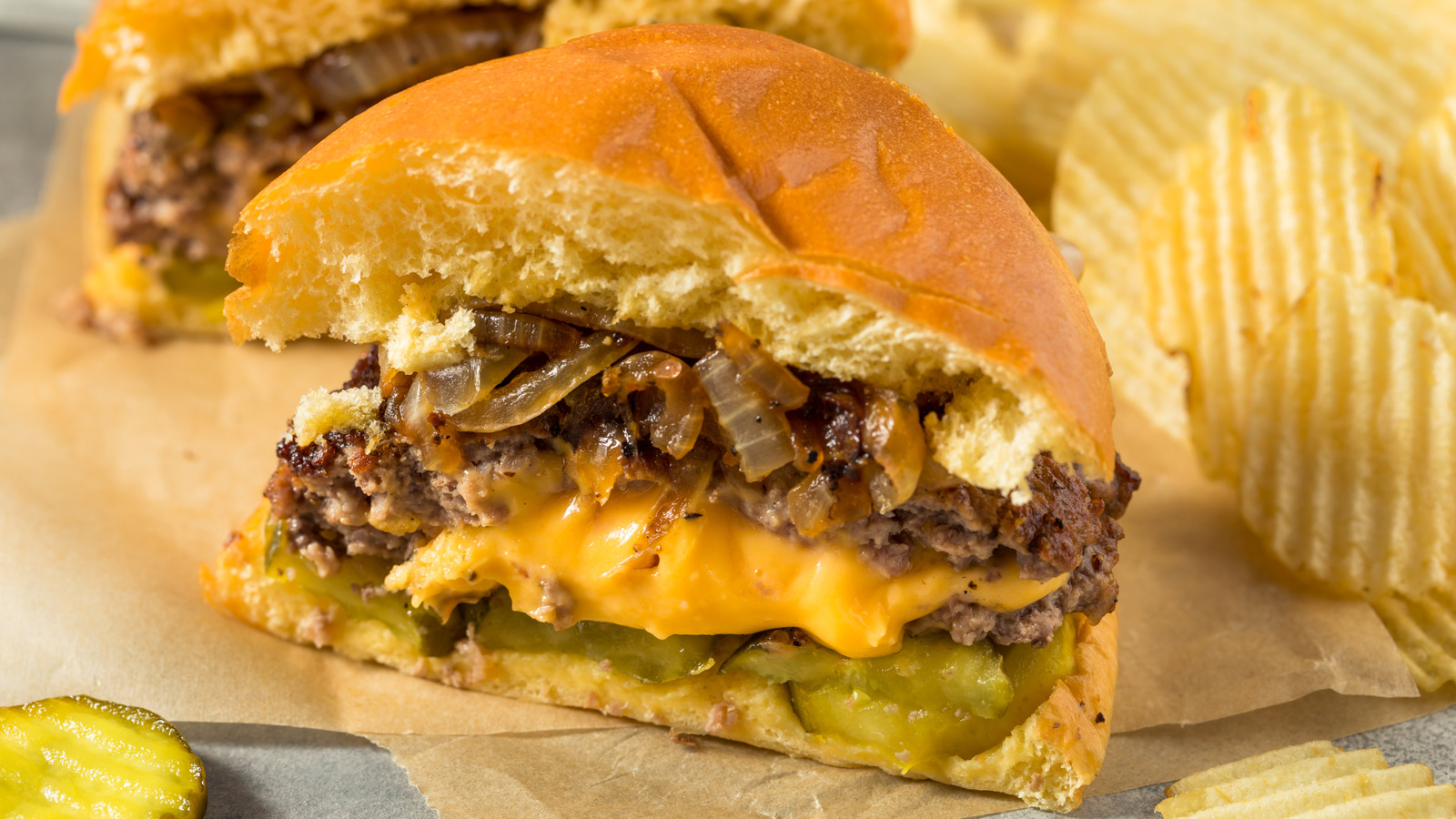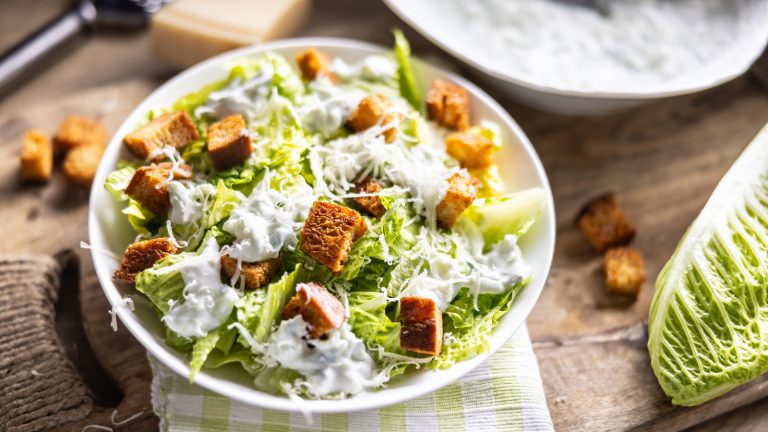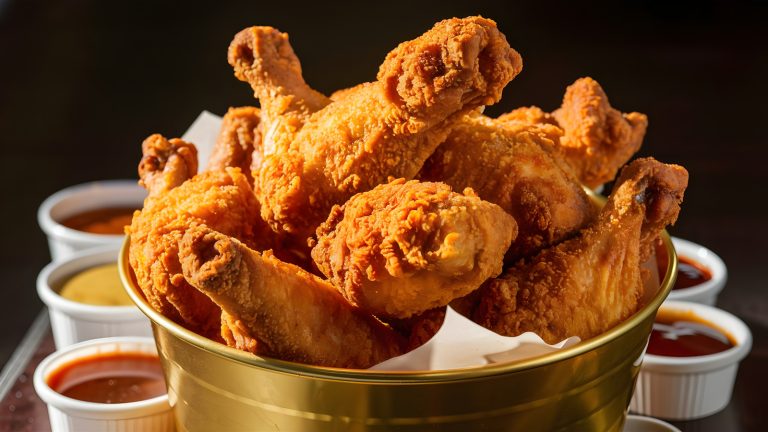The Midwest’s Juicy Lucy reinvented traditional cheeseburgers by introducing new possibilities for stuffing toppings inside a burger rather than just on top. But as fun to make as they are to eat, Juicy Lucys can be a little tricky. We spoke to Austin Stull, Executive Chef at The Grillroom Chophouse & Wine Bar in Chicago, who echoed this sentiment. “I love a good Juicy Lucy, but they can be a bit difficult to execute,” he admitted.
Pointing out issues with using the wrong type of cheese that leads to a greasy mess, Stull recommends “a cheese that’s firm and will melt when heated and not break,” and avoiding brie, chevre, and other soft cheeses. “Sear both sides on high to get your crust, then finish in the oven, around 375 [degrees Fahrenheit,” he added. “This doesn’t expose the interior to extreme heat but just enough to melt the cheese through.”
There are many schools of thought when it comes to assembling the perfect burger, but for a Juicy Lucy, the two main components you have to take into consideration are the meat and the cheese. Using the right amount of heat so your cheese melts and the patty holds together is definitely a balancing act, but with thoughtfully chosen ingredients and a little patience for the method of cooking, these stuffed burgers will be the hit of your next dinner. Remember, the desired effect is a sensation of crave-worthy melted cheese inside a burger that is neither burnt nor falling apart.
Cheeses to use and which ones to avoid
The cheese isn’t only a delicious stuffing in your Juicy Lucy; it also acts as a binding agent of sorts in the burger. As such, Stull has his own recommendations for the specific type of cheese to use. “I recommend cheddar or a low-moisture mozzarella for filling, you want a cheese that’s firm and will melt when heated and not break,” the chef advised. “This way, you get a nice stretchy interior.” This stretchiness is vital to create a satisfying texture and prevent an unpleasant mess in every bite, which can definitely happen with less structurally sound cheeses. You can get creative by trying a smokehouse style or extra sharp cheddar in your burgers, or a smoked low-moisture mozzarella.
As far as what cheeses to avoid using in your Juicy Lucy, Stull notes that soft cheeses, “do not hold up well to high heat and separate easily.” It’s important to have a cheese with some elasticity to its texture to act as a proper burger binder. Blue and goat cheese are best when crumbled on top of a burger rather than stuffed inside. Further, the easiest way to make stuffed burger without a mess involves taking two thin patties and sandwiching the cheese stuffing inside before cooking.
Cooking your burgers to perfection
To ensure even cooking of your Juicy Lucy burger, Stull advises first searing either side of the patty before finishing it in the oven, stating, “This doesn’t expose the interior to extreme heat but just enough to melt the cheese through.”
When it comes to that initial sear, you need to be extra careful when flipping stuffed burgers, opting for a larger-than-usual spatula to avoid a disastrous mess in your pan and achieve an ideal outer crust. Finishing the burgers in the oven will help to thoroughly cook the patties while warming the cheese. Make sure to cook your burgers to an internal temperature of 165 degrees Fahrenheit for safe consumption. Typical beef burgers should be cooked to 160 degrees Fahrenheit, but should be cooked a little longer to ensure doneness, as the beef will be mixed with a cheesy filling.
A fully cooked inside matched with a crisp outside and all the delightfully cheesy and beefy textures therein is the hallmark of a successful Juicy Lucy. The taste of the meat and cheese alone is sensational, and this can be finished off on a bun or in a lettuce wrap -– knife and fork suggested for this method! Keep your toppings simple with a garlic aioli or ketchup and mustard, remembering that much of the flavor you want to savor is already right inside the burger.







